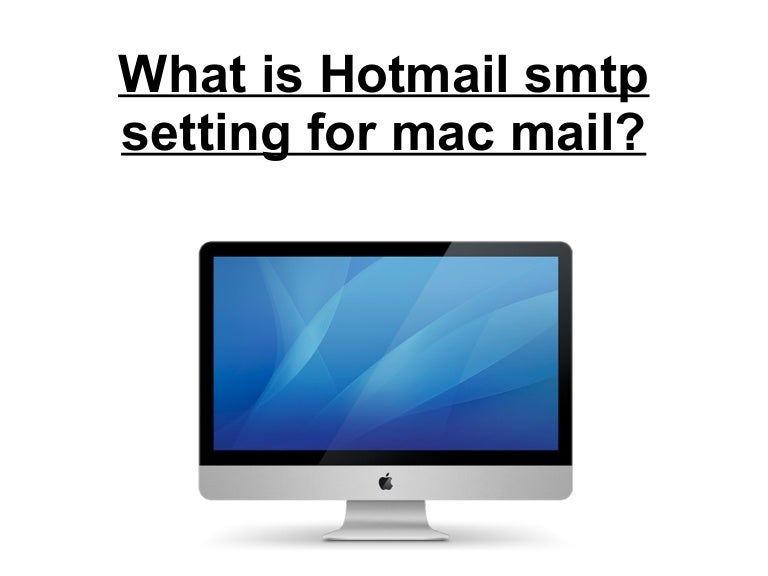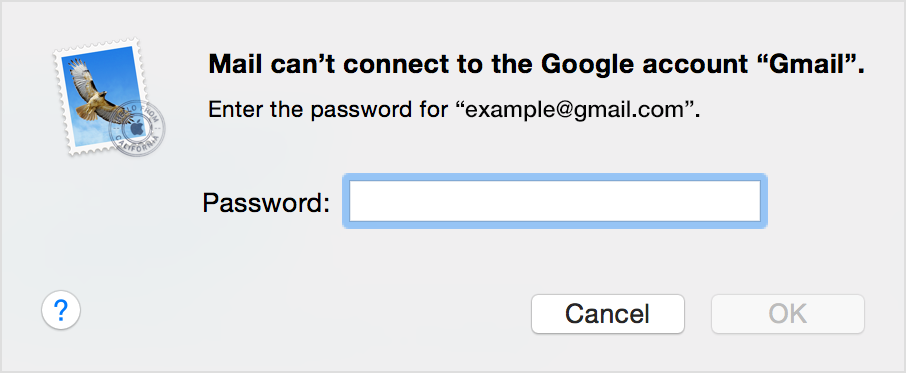
- Update Mac Mail Server Settings
- Hotmail Settings For Mac Mail App
- Hotmail Server Settings
- Mac Mail Settings For Hotmail
Hotmail supports access via IMAP, POP3 and SMTP protocols. Below you can find the configuration settings for those protocols. All Hotmail servers (POP3 and SMTP) use implicit SSL (use ConnectSSL method). SMTP server supports explicit SSL (you can use Connect method and then secure the channel using StartTLS method). Settings include options for downloading message headers and when to sync and update folders. To access these settings, click Outlook Preferences Accounts, select the IMAP account, and then click Advanced. For information about the primary IMAP account settings, see Basic IMAP account settings for Outlook for Mac.
This guide shows you step-by-step how to set up email account in Mail on MacOS.
Add New Account
- Choose Preferences, from the Mail menu.
- Select Preferences.
- Click on the Accounts icon in the Mail Preferences window.
- On the Accounts window, click the + (plus) sign to create a new account.
Account Settings
- Choose Other Mail Account...
- Enter your Full Name, or your name as you would like it to appear on your sent email.
* Replace example.com with your own domain name. - Enter your Email Address.
- Enter your email account's password.
- Click the Next button.
- A message should appear saying 'Account must be manually configured'. Click Next.
Incoming and Outgoing Mail Server Settings
Update Mac Mail Server Settings
When entering the information for your Incoming Mail Server you will need to decide if you would like to use POP3 or IMAP. POP3 will download and remove all of the emails from our server, whereas IMAP will synchronize the emails between your email client(s) and our server. IMAP is recommended if you will be using this email account with multiple devices since they will all synchronize.
Not sure if you want POP or IMAP? Read more about it on Webmail and Email Applications: IMAP and POP
- * Replace example.com with your own domain name.

- Choose your account type, either IMAP or POP.
- Enter mail.example.com as the Incoming mail server, replacing example.com with your own domain name.
- Enter your full email address as the User Name.
- Enter the Password of your email account.
- Configure the Incoming and Outgoing Server. For more information, refer to Email Client Settings.
- Once Incoming Server settings have been configured, you will need to enter the Outgoing Mail Server (SMTP) setting. Enter one of the following options:
- Click the Server Settings button. You will be prompted to further configure your Outgoing Mail Server.
- Enter the Outgoing Mail Server again.
- Choose your Server port:
- Choose Password for Authentication.
- Re-enter the full email address as the User Name, and the password for that email account.
- Click the OK button when finished.
Note: If you choose to use an SSL, you may see an SSL warning. Please see SSL Certificate Warning for the next steps.
SSL Certificate Warning
Hotmail Settings For Mac Mail App
If you choose to use SSL, you may receive a message warning you that the certificate is not trusted. If you receive this message, follow these steps:
Hotmail Server Settings

- Click the Show Certificate button.
- Check the box to Always trust the certificate.
- Click the Connect button.
Complete Set Up on Yosemite OS
Mac Mail Settings For Hotmail
If you're running Yosemite, we suggest following these steps to make sure your account settings don't change. This only applies to Apple computers running Yosemite.
- Choose Preferences, from the Mail menu.
- Click on the Accounts tab.
- Next, click on the Advanced.
- Uncheck the option labeled 'Automatically detect and maintain settings
- Now click on the Account Information tab.
- Under Outgoing Mail Server (SMTP), select Edit SMTP Server List.
- Click the Advanced tab.
- Uncheck the option labeled Automatically detect and maintain settings.
- Click the OK button when finished.